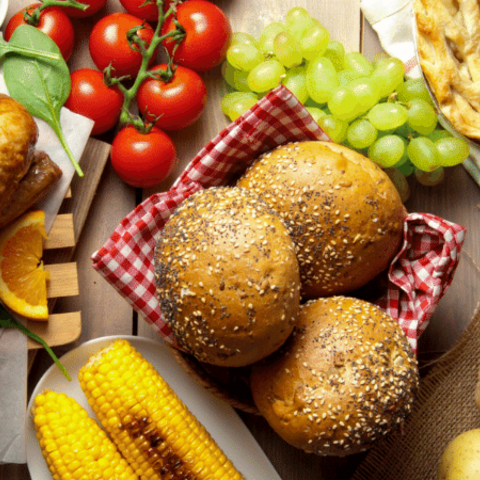
The holidays are fun and joyous occasions when family and friends get together for parties and food galore! The last thing you want to invite to your party is foodborne illness. Use the following tips to keep your family and friends from becoming sick. Don’t let bacteria (germs) crash your holiday parties.
Buffets
Buffets are a popular way to celebrate holidays with family and friends. This type of food service, where foods are left out for long periods, leaves the door open for uninvited guests, bacteria that cause foodborne illness. Festive times should not include sharing foodborne illness. Here are some tips for preparing for your party:
- Always wash your hands with soap and water before and after handling food.
- Keep your kitchen, dishes and utensils clean.
- Always serve food on clean plates, never use plates used for holding raw meat and poultry for cooked food.
Party Crasher
Prevent harmful bacteria from crashing your party. Bacteria grows when the food is left out for more than 2 hours at room temperature. Follow these tips to keep your family and friends from getting sick:
- Keep cooked foods hot at 140°F or higher. Use chafing dishes, slow cookers and warming trays to keep foods hot on your buffet table.
- Keep cold foods at 40°F or colder. Keep foods cold by nesting dishes in bowls of ice or use small serving trays and replace them often.
- Cool foods quickly in your refrigerator. Divide large portions of cooked foods into smaller portions to cool quickly in your refrigerator.
- Bacteria can also multiply quickly in moist desserts that contain dairy products. Keep eggnog, cheesecakes, cream pies and cakes with whipped cream or cream cheese frostings refrigerated until serving time.
- Prepare extra serving platters and dishes ahead of time; store them in the refrigerator or keep them hot in the oven (set at approximately 200 to 250°F) before serving. Then replace empty platters rather than adding fresh food to a dish that already had food in it.
Leftovers
There are limits on how long you can safely keep leftovers. When heating and storing leftovers keep the following in mind:
- Wash hands with soap and water before and after handling food.
- Divide leftovers into smaller portions and store in shallow containers in the refrigerator.
-
Refrigerate cooked leftovers within 2 hours. Use an appliance thermometer in your refrigerator to keep your refrigerator at 40°F or below.
-
Reheat cooked leftovers to 165°F; use a food thermometer to measure the temperature. Sauces, soups and gravies should be reheated by bringing them to a boil. When microwaving leftovers, make sure there are no cold spots in food (where bacteria can survive). Cover food, stir and rotate for even cooking.
- Eat leftovers within three to four days. When freezing leftovers, use within 2-6 months for best quality.
| Product | Refrigerator (40 °F) | Freezer (0 °F) |
|---|---|---|
| Fresh Eggs, in shell | 3 to 5 weeks | Do not freeze |
| Soups & Stews | 3 to 4 days | 2 to 3 months |
| Fresh Turkey, whole | 1 to 2 days | 1 year |
| Fresh Turkey, pieces | 1 to 2 days | 9 months |
| Giblets | 1 to 2 days | 3 to 4 months |
| Casseroles | 3 to 4 days | 2 to 3 months |
| Gravy & Broth | 3 to 4 days | 2 to 3 months |
| Stuffing, cooked | 3 to 4 days | 1 month |
Check out the Cold Food Storage Chart from USDA for more information.
Source:
- Albrecht, J. A. (2008). Food Safety for Families Parent Newsletter. University of Nebraska-Lincoln Extension. This newsletter was developed as part of the Food Safety for Families with Young Children Project, USDA‐CSREES Project 2008‐51110‐19237.
- USDA Explains Why Food Safety Should Be at the Top of All of Our Holiday Lists, United States Department of Agriculture (USDA)
- Cold Food Storage Chart, USDA
Tags:







